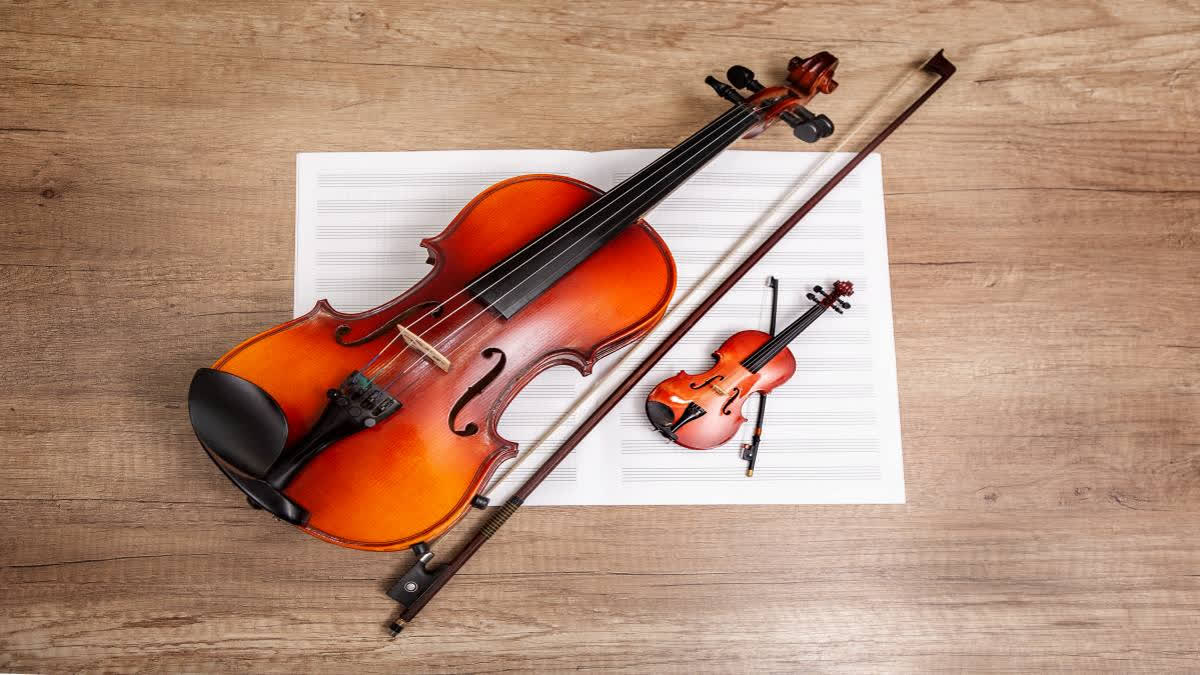Hyderabad: The violin is a four-stringed wooden musical instrument that is played by sweeping a bow over its strings while held against the neck. The violin is a wonderful amalgam of physics, chemistry, science, and mathematics. It also promotes fine motor skills, muscle activation, and muscle memory. On December 13, we honour the violin, which is cherished all across the world, and acknowledge its cultural contributions and effect.
The violin is undoubtedly one of the most versatile instruments available, allowing for both extremely delicate and passionate music. On Violin Day, we honour violinists and invite them to listen to violin-based music.
History of Violin-The earliest fiddlers in history are thought to have been horsemen from Inner Asia, specifically Turkic and Mongolian tribes. They performed on upright violins with two strings that were strung with horsehair. They also played with horsehair bows, and the ends of their necks were frequently adorned with a carved image of a horse. The nomads left behind the violins, violas, and cellos that we play today, all of which still have horsehair bows. Similar to modern violins, Andrea Amati is credited with creating the first known four-string violin in 1555.
When the "Lady Blunt" was put up for sale on June 20, 2011, it brought in a record sum of money. The violin made by Stradivari sells for $15.9 million. More than any other craftsman, Stradivari violins are sought for by collectors and musicians alike.
The Latin word "Vitula", which meant "stringed instrument" in medieval times, is where the name "violin" originates. The tiniest and highest-pitched instrument in the string family is the violin. It is similar to the North African instrument known as the rebab, which is a three-stringed instrument that is also played with a bow dragged across the strings. Singing and dancing have long been accompanied by violins.
In addition, it is an important solo instrument in classical music and takes centre stage in orchestras. When playing, the violin is held beneath the chin, and depending on whether a string is plucked or bent, the fingers of the left-hand press against the strings on the instrument's neck to produce different pitches. In contrast, the bow is held in the right hand while it is pulled at an angle across the strings to produce sound.
Significance- The violin is considered one of the most significant musical instruments in history, perhaps because of its vital function in an orchestra or the inspiration and feeling it evokes in the listener when they hear its intensely romantic sound. Playing the violin yourself is one of the greatest ways to celebrate Violin Day. If you are not proficient in playing the violin, you can utilise this day to fulfil a lifelong dream by teaching others about the day and enjoying and sharing some violin music with others.
The God of the Indian Violin- The most well-known violinist in India, Dr. L. Subramaniam, gave a concert at UCLA's Fowler Museum. Dr. L Subramaniam is a master musician with training in both Western and Carnatic classical music traditions. Since the beginning of his career, every composition he has made has been a work of art unto itself.
He is not a typical violinist; instead, he revolutionised the instrument by developing novel methods and approaches. The Indian government awarded him the Padma Shri award in 1998, and in 2021 he received the Padma Bhushan award.
